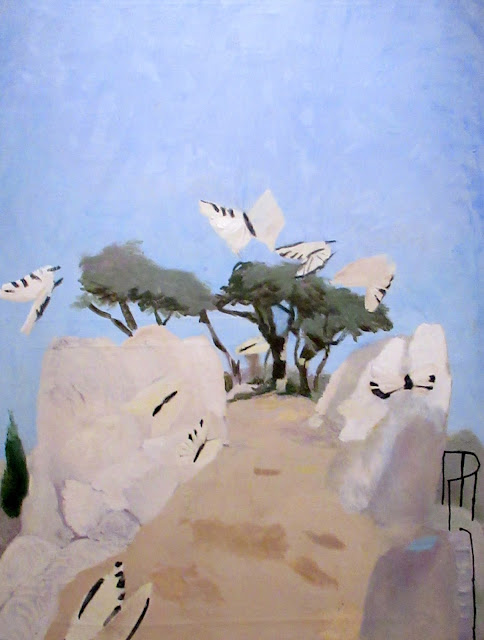Nature's Canvas by Mary Newcomb

Newcomb's paintings detail the cycle of life on the farm in rural East Anglia that she managed with her husband. Immersed in nature, little escaped her naturalist's eye. Titles for paintings were drawn from fleeting observations - beetles drinking at a shrinking puddle, a lady with a bunch of sweet williams, a flock of gold finches dispersing - sublime moments in everyday life. In striving to capture these moments honestly, Newcomb produced highly original work, stating: 'You cannot explain the fascination of painting to someone who is not interested ... it is a language'.
Bon in 1922, Newcomb was fascinated by nature and drawing from an early age. Obtaining a General Sciences degree from Reading University in 1943, she went on to teach sciences at Bath High School, while attending evening classes at Corsham Court Art School. After marrying Godfrey Newcomb in 1950, the couple moved to a smallholding in Needham, Suffolk, and raised two daughters. Newcomb came to painting relatively late in life, typically working on her pictures early in the morning or last thing at night: 'when all the animals had been fed, and the children, and the eggs had been washed...'
Modest and self-taught, Newcomb distrusted academic 'Art', preferring to discover things for herself than be taught second-hand thoughts. Her rural subjects, fresh vision and unconventional use of perspective suggests parallels with 'naive' art.
Like Newcomb, Wallis had received no formal artistic training. Newcomb felt a close affinity with his work, describing how Wallis painted from his knowledge, the painting flat on his lap like a map to be travelled around. Here the seascape has been captured on a tin tray, the red-sailed schooner possibly a figment of Wallis' memory.
The Boat Trip, 1976, (oil on canvas)
Like Wallis, Newcomb rejected contentional perspective, using a child-like mapped vision to make the space within her paintings her own.
Nicholson's free application of paint and her ability to capture fleeting moments resonates with Newcomb's approach to capturing the natural world, the passing of a boat or the movement of birds. Newcomb once commented on what different artists they were, while Nicholson painted what she saw, Newcomb painted what she knew.
Newcomb mentioned Spencer in her diary, describing him, along with Blake, Lowry and Rousseau as an 'outstanding visionary'. Here Spencer's painting of farm animals and agricultural buildings parallels Newcomb's affectionate depictions of rural life. Both artists drew inspiration from the places where they lived. Spencer described the sleepy village of Cookham, as 'a village in Heaven', while Newcomb, firmly rooted in East Anglia, noted that 'the countruside is companionable, towns are not'.
Foaming Water, 1975, (oil on board)
Thinking on Comets, Man and Beast, 1974, (oil on board)
Swan on the Marshes, The Waveney, Suffolk Border, 1980, (oil on canvas)
Man Cycling Madly Down a Hill presents a typical Mary Newcomb moment. The details of the scene were meticulously noted in Newcomb's diary, from his flapping trousers to the church on the hill in the background. Yet her painting verges on abstraction by focusing on her sensory perceptions: the man is a dark figure hurtling through space, surrounded by spring colour and dappled sunlight.


























No comments:
Post a Comment